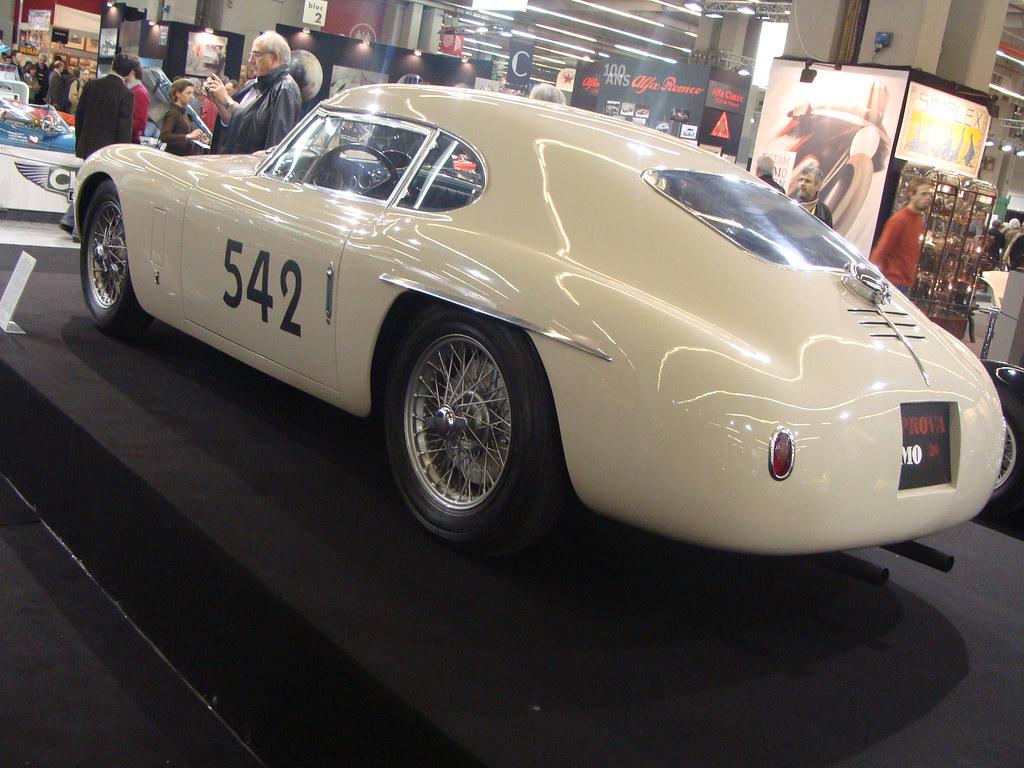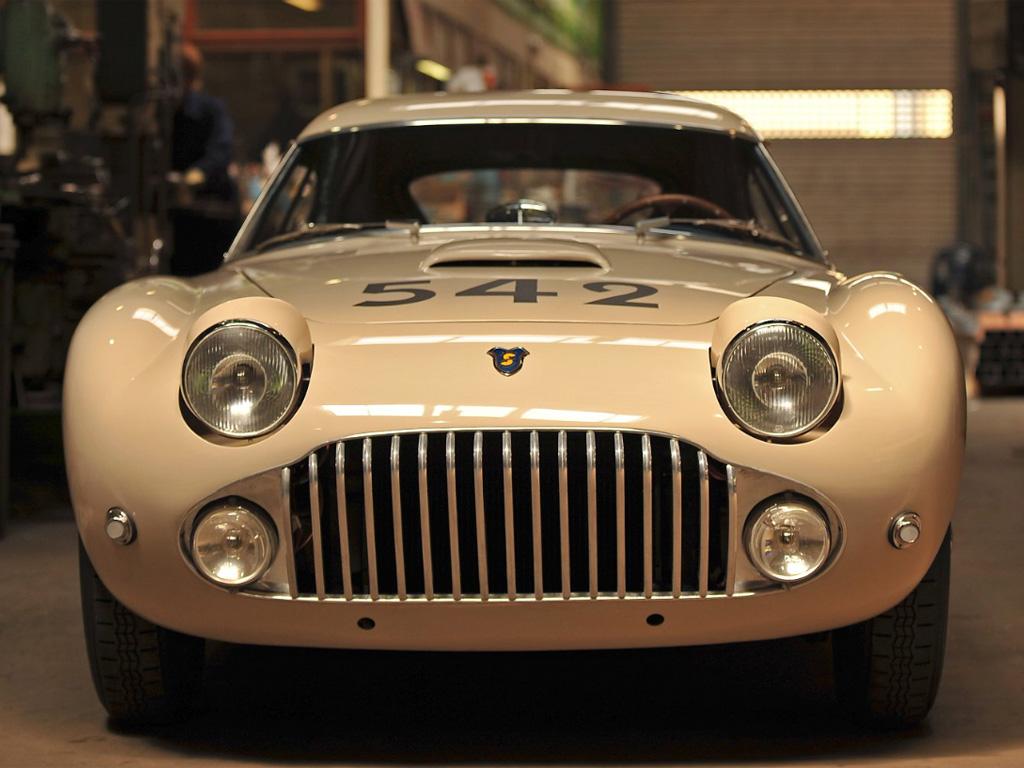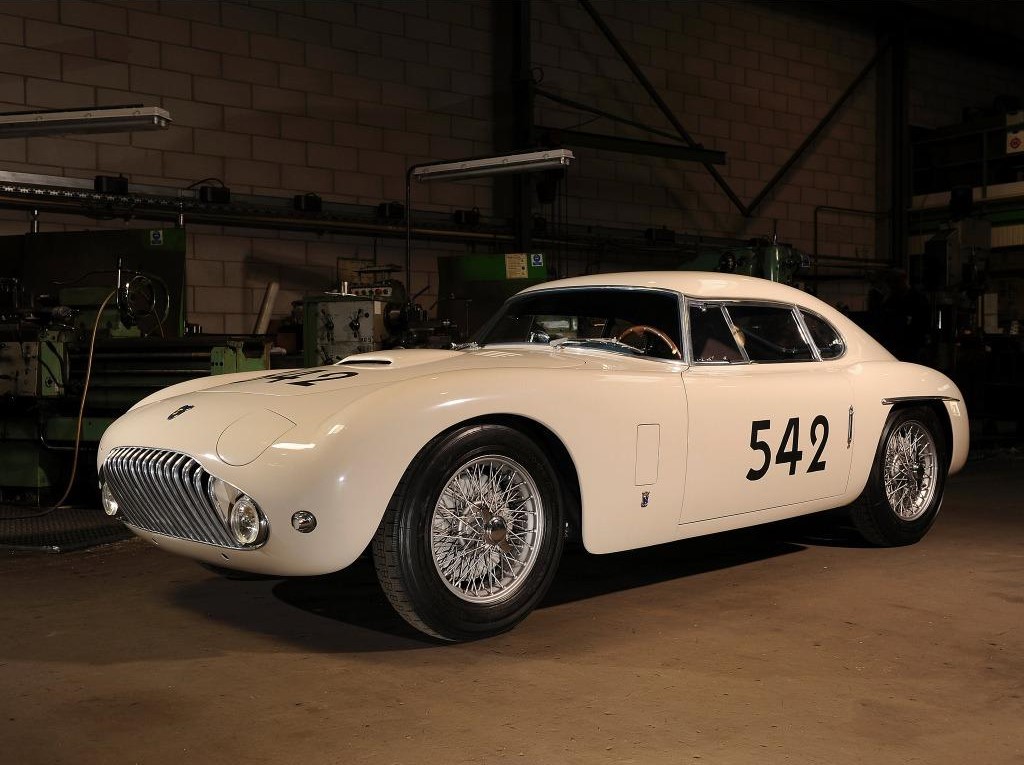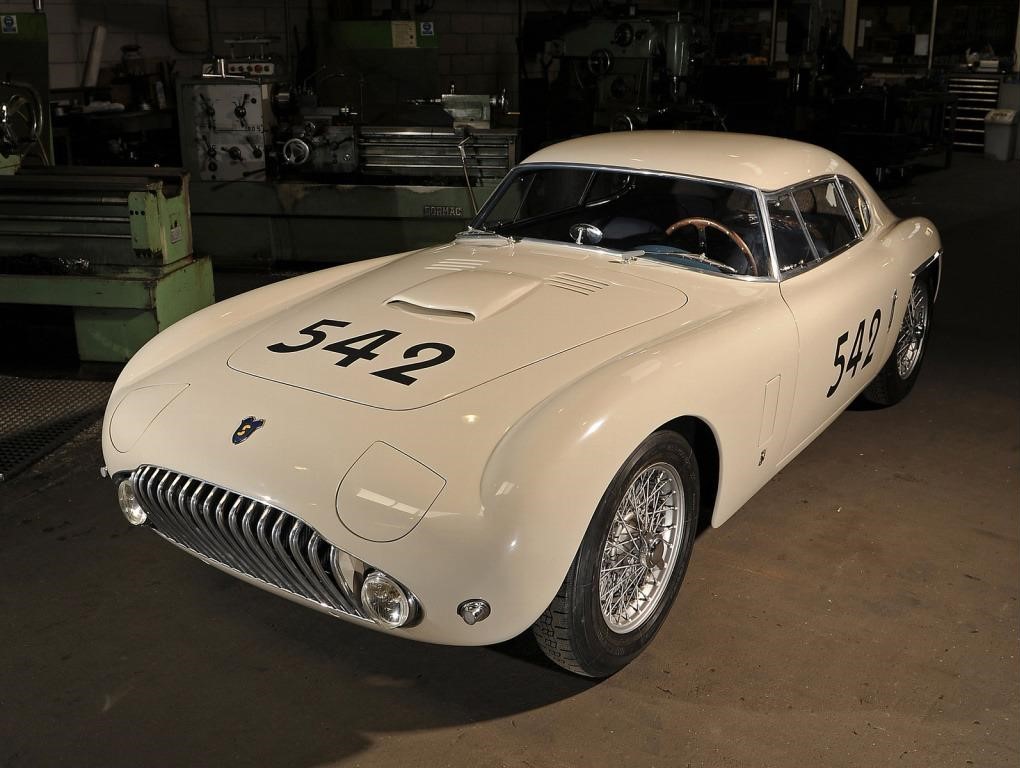1952 Siata 208 CS

The descriptions of the Classic Cars in the Directory were partly generated or supplemented with the help of artificial intelligence (AI). The content may occasionally not always be entirely accurate or factually correct despite careful checking.
The Siata 208 CS 1952 is a true masterpiece of engineering innovation and design. The car was produced by the Italian manufacturer Siata between 1952 and 1953, and it quickly gained a reputation among automobile enthusiasts as one of the most beautiful and technically advanced cars of its time. Built on a tubular steel chassis, the Siata 208 CS boasted a lightweight aluminum body that was both aerodynamic and elegant, with sweeping lines and curves that were unmistakably Italian in design.
Under the hood, the Siata 208 CS was powered by a potent 2.0-liter V8 engine, capable of producing up to 132 horsepower at 6,200 rpm. The engine was mated to a four-speed manual transmission that allowed for precise control over the car's power output, and the car was capable of reaching top speeds of up to 125 mph. The Siata 208 CS was also fitted with a limited-slip differential, a feature that allowed for improved traction and handling on the road.
One of the most remarkable technical features of the Siata 208 CS was its suspension system. The car was fitted with a sophisticated independent front suspension that used double wishbones and coil springs to provide a stable and responsive ride. At the rear, the car featured a live axle with semi-elliptic leaf springs, which provided more than enough stability and control for even the most demanding driving conditions.
In terms of braking, the Siata 208 CS was equipped with four-wheel hydraulic drum brakes, a feature that was considered cutting-edge technology at the time. The car also featured a rack-and-pinion steering system that offered precision handling and a comfortable driving experience, even at high speeds.
Inside the car, the Siata 208 CS was fitted with a stylish and comfortable interior that featured leather seats, a classic steering wheel, and a range of dials and gauges that provided real-time information on the car's performance. The car also boasted a luxurious wood-rimmed dashboard, which was a hallmark of Italian automotive design during the 1950s.
Overall, the Siata 208 CS 1952 remains a legendary car even today, thanks to its advanced technical features, its beautiful design, and its impressive performance. This car is a true testament to the skill and vision of the engineers and designers who created it, and it has earned a place in the history books as one of the greatest Italian sports cars of all time.
Milestones
- Siata 208 CS was introduced in 1952 as a sports car. - It had a lightweight body and was powered by a 2.0-liter Fiat engine. - The car had a unique design with streamlined curves and a sloping roofline. - It featured high-performance components like Weber carburetors, a twin-spark ignition, and a four-speed manual transmission. - It could achieve a top speed of 118 mph and 0-60 mph in just 11 seconds. - The Siata 208 CS achieved success in various racing events, including the Mille Miglia and the Targa Florio. - Only a limited number of Siata 208 CS were produced, making them highly sought after by collectors today. - The car's design and performance influenced the development of other Italian sports cars of the era.Technical
- The Siata 208 CS was a sports car produced from 1952 to 1955. - It featured a lightweight steel frame chassis with independent front suspension and a live rear axle. - The engine was a modified Fiat 1100 unit, a 2.0-liter inline-four with dual Weber carburetors, producing 125 horsepower and 125 lb-ft of torque. - The transmission was a four-speed manual with a floor-mounted shifter. - The car had a top speed of around 120 mph and could accelerate from 0 to 60 mph in about 9 seconds. - The bodywork was designed by Giovanni Michelotti and featured a compact, aerodynamic shape with a long, pointed hood and a rounded rear section. - The interior was sparse but comfortable, with simple seats, minimal instrumentation, and a small, leather-wrapped steering wheel. - Only around 35 examples of the Siata 208 CS were produced, making it a rare collectors' item today.



